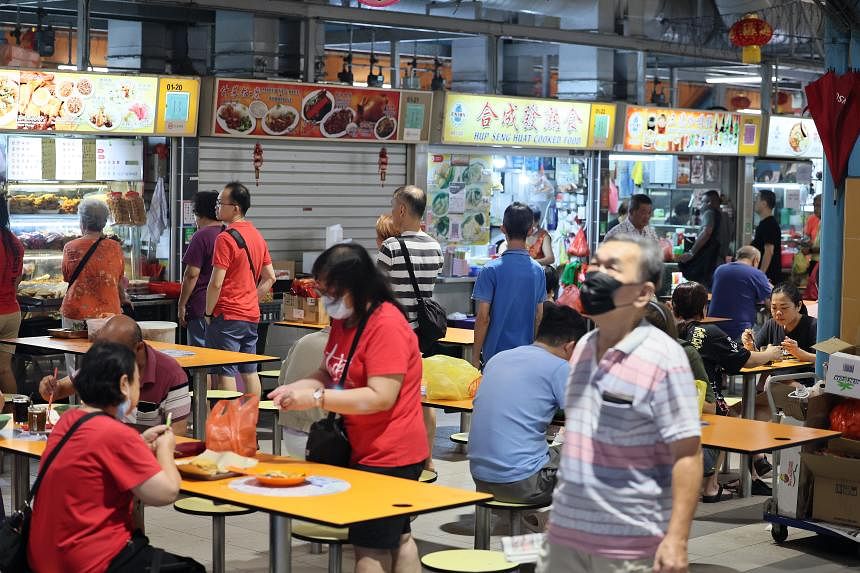SINGAPORE – Hawker food prices rose by a record high of 6.1 per cent in 2023, a new study by the Singapore Department of Statistics (SingStat) found.
This means the average cost of a plate of chicken rice that year was $4.15, up from $3.40 in 2019, while that of a bowl of mee rebus went up from $3.26 to $3.79 in the same time period.
While some cost pressures have since eased – with hawker food inflation falling to 4.1 per cent in December 2023 after peaking at 8.3 per cent in February 2023 – this may not translate to cheaper eats.
Price increases were driven partly by factors such as pricier raw food ingredients due to supply chain disruptions triggered by the Covid-19 pandemic and compounded by other events such as the Russia-Ukraine war, the study said.
They have since moderated because global energy and food commodity prices fell significantly between February and December 2023, said the Ministry of Trade and Industry, pointing out that the Singapore dollar nominal effective exchange rate also appreciated.
“This abated cost pressures faced by F&B service providers, including hawkers, in terms of imported raw ingredients, electricity and gas,” it said.
It expects hawker food inflation to ease further in 2024 if cost conditions stay favourable.
Global prices of most food commodities such as cereals, meat and dairy are likely to continue falling due to favourable global supply conditions, and the Singapore dollar trade-weighted exchange rate is gradually strengthening, it said.
The study, published on May 6, compared the 6.1 per cent jump in overall hawker food prices in 2023 to the average price increase of 2.2 per cent per year observed from 2012 to 2022.
It compared prices of food across hawker centres, coffee shops and foodcourts, using the consumer price index for hawker food, which measures the average price changes across over 100 hawker food items from 1,700 stalls. A total of 16 commonly sold food items and beverages were used for the analysis.
In response to queries, SingStat said price increases were also observed at restaurants, which saw a 5.9 per cent increase, and fast food, which was up 7.7 per cent.
SingStat’s study also found that at hawker centres, drinks saw the largest price increase of 6.9 per cent, while at coffee shops and foodcourts, prices of noodle and rice items recorded the largest increases of 8 per cent and 6.5 per cent, respectively.
CGS International economic adviser Song Seng Wun said prices of ingredients are affected by global trends such as climate change and war, which drove up prices of cooking oil, chicken, sugar and cocoa, among other ingredients.
The price spike in 2023 could also have been because some hawkers chose to raise prices at one go, rather than have incremental increases every year, said Dr Teo Kay Key, research fellow at the Institute of Policy Studies. This finding was similar to results from her 2023 study on food prices called the Makan Index project.
“Stall owners might have waited for the cost increases in different areas, such as utilities, rent, GST (goods and services tax), ingredients, and delivery, logistics or supply chain, to stabilise somewhat before deciding on the exact price increase, and to do a larger increase at one go.”

